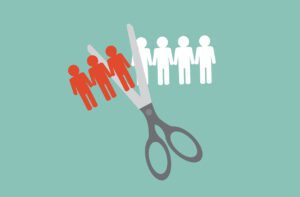
How To Prepare For A Layoff
Layoffs are becoming increasingly common, yet often come when least expected. They are usually 100% out of your control, which makes how to prepare for a layoff even more challenging to “plan” for. If you’ve experienced a layoff or are concerned one might be on the horizon, read our recommendations for each category below.
Severance & Final Pay
Review your final paycheck and ensure it accounts for any remaining hours, commissions earned, unused PTO balance, and any outstanding reimbursements that might be owed to you. If you have any company stock, you can accelerate the vesting schedule or at least receive a prorated amount. Be aware of your equity compensation’s impact on your overall tax liability. It’s important to note that severance packages are usually well thought out, but that doesn’t necessarily mean you can’t try negotiating. So, prioritize what is most important to you and see if it would be considered. Having a change in income means taking a deeper dive into your cash flow, being mindful of your spending, and strategically pulling resources to bridge the gap.
Unemployment Benefits
Specific requirements must be met to qualify for unemployment benefits. It’s worth applying for! Each state has different criteria and ongoing requirements. But, if you are eligible, it will provide some relief and temporarily replace some of your lost income. The maximum weekly benefit in Texas is $577, and you could qualify for up to 26 weeks of benefits. The sooner you apply, the better. The Texas Workforce Commission states that it takes about four weeks from the date you use to know if you are eligible for benefits.
Health Insurance
Check how long you will be covered under your employer-sponsored plan. If you have any immediate health concerns, schedule doctor appointments and fill your prescriptions before your coverage changes. Most often, coverage is paid in advance for the month, and coverage would be in place at least until the end of the month of separation. Then, you’ll have to decide on future coverage options:
Option 1 – If you’ve been laid off from a company of 20 or more employees, you can continue coverage through COBRA for up to 18 months. Remember, you must pay the entire premium out of pocket, which can be expensive.
Option 2- Determine the ACA plan available on the Health Insurance Marketplace (“exchange”). You may also qualify for a subsidy if your income has drastically changed. You don’t have to wait for the open enrollment period since a job loss is considered a life event that allows you to apply for coverage within 60 days of losing your job.
Other Employee Benefits
Review your life insurance and disability benefits. You can convert them to a standalone policy. Depending on the costs, you may want to continue coverage or decide it’s not worth keeping. If you choose not to continue coverage, at least be aware of any deadlines and determine how long your coverage will remain.
401(k)/Retirement Account
If you anticipate a layoff in the future, adjust your contribution, aim to max out your contribution, and take advantage of any employer match. Note if you have an outstanding loan against your 401(K), you will likely have to repay the loan, or you’ll be required to make a distribution from the 401(K) to cover the balance. This would be treated as a taxable distribution. Below are some of the options available for the remaining balance (vested) in your 401(K):
Option 1 – Leave it invested. If your next employer offers a 401(k), you can consolidate plans and do a direct rollover to your new employer. This avoids any tax penalties and allows you to continue saving for retirement.
Option 2 – Open an IRA and request a rollover. Putting the funds in an IRA broadens your investment options since you won’t be limited to what is offered in your specific 401(K) plan. However, you would lose the ability to take a loan against your 401(K) balance if you transfer funds to an IRA.
Option 3 – Cash out your 401(K). It is an option and might be one that you need to consider if you need liquidity. Remember that you may be subject to a 10% penalty for withdrawing funds before age 59 ½, and your distribution will be subject to federal income tax.
Administrative Tasks
- Update your email address for anything linked to your work email address, such as 401K, paystubs, professional organizations, and LinkedIn profile.
- Gather performance reviews, job descriptions, and promotion history.
- Transfer and save personal information on a work device and clear any saved passwords.
- Request a copy of your separation agreement if it is needed for unemployment or the health insurance marketplace.
- Prepare for the job search by updating your resume LinkedIn profile, and reach out to your network for employment opportunities.
Being notified of a job loss can be challenging. Take time to process the news and its personal and professional impact. You should not sign anything without reading and reviewing it so you understand the ramifications, not only from a financial standpoint but also from a legal perspective, so that you don’t violate the terms of the agreement.
Seek a trusted wealth advisor for guidance and to help ease your concerns on how to prepare for a layoff as you plan for your next chapter. Shifting your perspective and seeing the layoff as an opportunity for growth can make a positive and meaningful change in your career.



